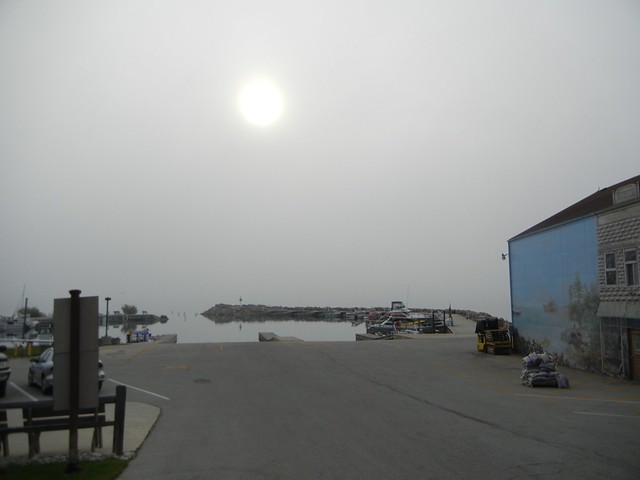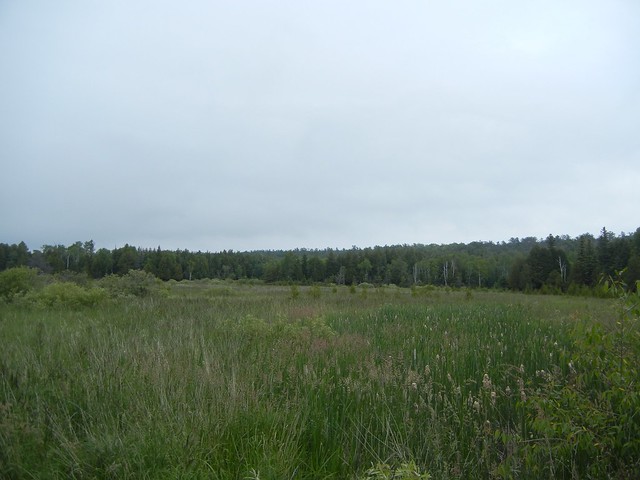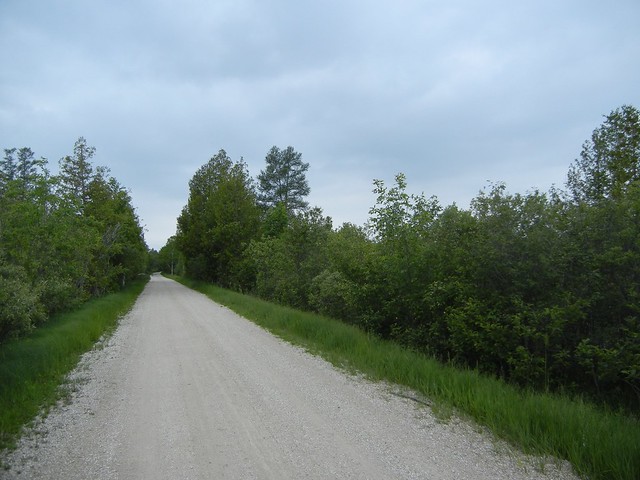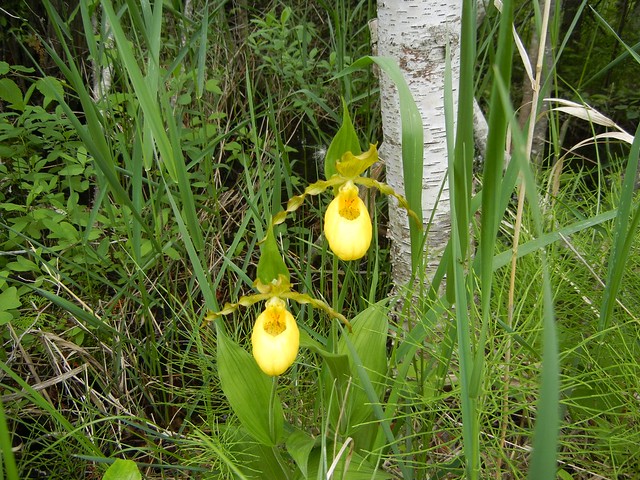The fog made for an eerie morning here in Baileys Harbor, an impression only heightened by the screeches of invisible Caspian terns over the lake. But nothing can deter birders when they’re in a new place, and after breakfast, Marnie and I met up with Paul for an introduction to some of this long peninsula’s many and varied habitats.
We started off on the bayshore of Peninsula State Park, where I was finally able to make sense of that mysterious word “alvar.” A bar far offshore was drifted with American white pelicans, and small groups, family groups, of red-breasted mergansers — a funny bird to see in the summer — dived and flew up and down in front of us.
The boggy woods across the road in the park must be great for migrants earlier in the season, and even in late June are surely good for breeding birds earlier in the day. The dominant voices late this morning were red-eyed vireos and American redstarts, with ovenbirds, common yellowthroats, yellow warblers, and a distant Nashville warbler rounding out our parulid list for the site.
From Peninsula we went on to Mud Lake, approaching along a road that reminded me more of a tamarisk marsh in Maine or New Brunswick than of the Midwest.
Delightful as it was to hear an alder flycatcher sneezing out in the alders, the roadside orchids were even more welcome a sight.
We looked for but did not see the rare Hine’s emerald, though a couple of other odonate species were flying; Paul identified a corporal, a darner, and a twelve-spotted skimmer. In spite of the overcast, we found pearl crescents, a white admiral, and several mourning cloaks — and impressively vast numbers of the insects the locals call “mosquitoes.” They seem thirstier than the ones I’m used to.
We fled the buzzing horde to look for some farmland specialties.
Paul knew a bobolink field, so we spent several enjoyable minutes watching the males sing and dance over the tall grass; I got to see one female fly in and land in the grass with something wriggly in her bill, so maybe they can bring off young before the rest of the field is hayed. Savannah sparrows shared the hayfield and perched on the wires, and two male dickcissels buzzed at a frustrating distance before one came closer to the road and sang for us as we pulled away.
Over the course of the morning we also found two pairs of sandhill cranes.
Paul had been watching this pair, which, he told us, has a large but still flightless chick. The colt must have been hidden in the grass when we arrive — but no complaints about missing it after such a wonderful and quintessentially midwestern morning in the field.
Today’s list:
Canada goose
mallard
hooded merganser
red-breasted merganser
wild turkey
American white pelican
double-crested cormorant
great egret
turkey vulture
osprey
red-tailed hawk
killdeer
ring-billed gull
herring gull
Caspian tern
rock pigeon
mourning dove
chimney swift
ruby-throated hummingbird
alder flycatcher
eastern phoebe
eastern kingbird
red-eyed vireo
blue jay
American crow
common raven
purple martin
tree swallow
northern rough-winged swallow
cliff swallow
barn swallow
house wren
eastern bluebird
American robin
European starling
cedar waxwing
Nashville warbler
yellow warbler
chestnut-sided warbler
American redstart
ovenbird
common yellowthroat
chipping sparrow
field sparrow
vesper sparrow
Savannah sparrow
song sparrow
indigo bunting
bobolink
red-winged blackbird
eastern meadowlark
common grackle
brown-headed cowbird
house finch
American goldfinch
house sparrow









